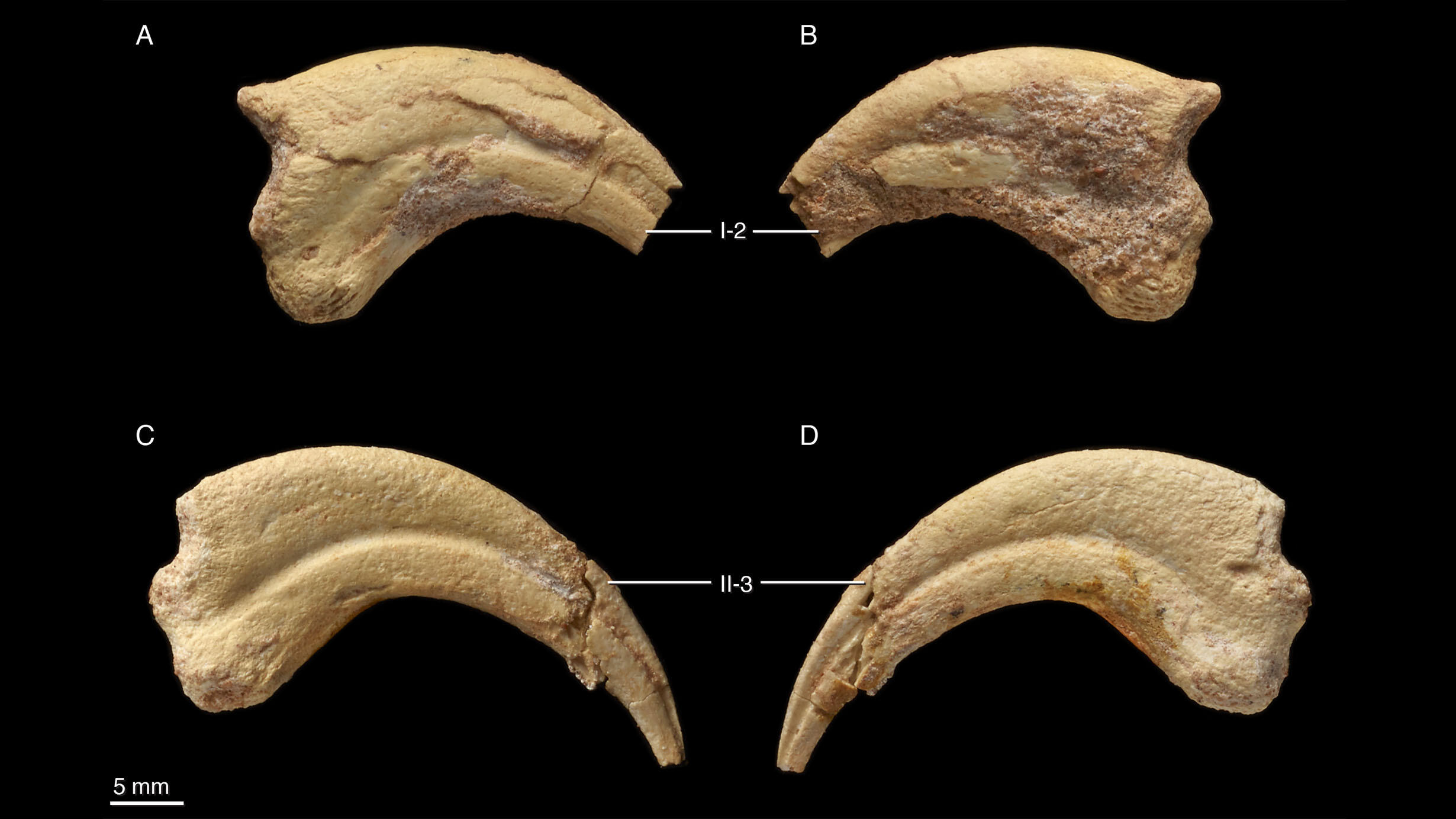 Multiple views of two Kuru kulla claws. These fossils helped confirm that Kuru kulla is distinct from other theropods.
Multiple views of two Kuru kulla claws. These fossils helped confirm that Kuru kulla is distinct from other theropods.Courtesy of M. Ellison
Scientists have identified a new feathered theropod dinosaur from Mongolia related to Velociraptor, a discovery that highlights the variety of dinosaur species in the Late Cretaceous.
The new species is named Kuru kulla and belongs to a group of theropods called dromaeosaurids, an important evolutionary link between dinosaurs and modern birds. The species, described in the journal American Museum Novitates, was named after the Tibetan Buddhist deity Kurukullā, which is associated with major life transitions.
"Dromaeosaurids are very birdlike in a lot of aspects of their appearance," said lead author James Napoli, a student in the Comparative Biology doctoral program at the Museum’s Richard Gilder Graduate School. "Kuru kulla would have been about the size of a large turkey or coyote, with a long snout, sharp teeth, large eyes, and a large brain."
The Kuru kulla fossils were found in the Gobi Desert of Mongolia in 1990, just hours before a more complete skeleton of another species, Shri devi, was recovered nearby. Fragmentary specimens like Kuru kulla have made it challenging for paleontologists to accurately identify species from the fossil record.
“Modern animals tend to be really similar to each other in appearance, especially when you take the skin and muscle away,” he said. “The bones of lions and tigers are almost impossible to tell apart. There’s a couple of distinguishing traits if you know what you’re looking for. But my question is always, if we only had them in the fossil record, would we actually know what to look for?”
R. Mickens/© AMNH
The team used CT scans and took detailed measurements of the Kuru kulla fossils, which included parts of the skull, vertebrae, and limbs. They then compared them to other dromaeosaurids, including Shri devi and Velociraptor, to determine whether Kuru kulla was a distinct species.
The results show that Kuru kulla can be distinguished by several skeletal features that are not found in any other dromaeosaurids, with some features that were unique among theropods more broadly. The team also found that Kuru kulla is closely related to the anatomically similar Shri devi, suggesting that they likely had similar diets.
"Normally it's assumed that if there's one particular kind of dinosaur in an area, there can't be another similar one because they would compete with each other and one would go extinct," said Napoli. "This project shows that you can have multiple similar species living at the same place at the same time."
Napoli plans to expand this research by studying modern animals to understand how anatomical similarities and differences may manifest in skeletons of closely related species.
"The Museum has the best collection of dromaeosaurid fossils in the world, and the best collection of people who know a lot about them. It was really special to be a part of that legacy,” he says.